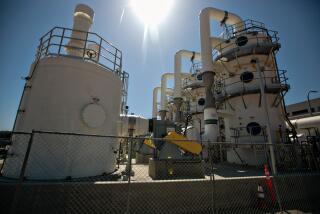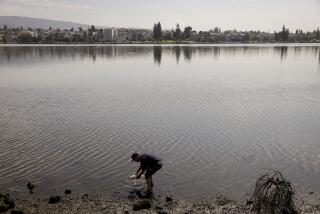Answers to Red Tide Could Be Blowing in the Wind
MIAMI — Equipment installed around the Gulf of Mexico to screen the air for particles emanating from two planned nuclear reactors in Cuba could be the key to unraveling the mystery of red tide.
The air samplers were put into service by the Department of Defense, which first funded the project three years ago. Funds for the Caribbean Radiation Early Warning System ran out in September, but one college is now using the technology to trace the microscopic algae that causes red tide.
“It could be an early warning system for biological events in the ocean,” said Peter Betzer, acting dean of the College of Marine Science at the University of South Florida in Tampa.
CREWS was implemented to pick up traces of iodine-131 in the air and alert U.S. officials in the event of a large radioactive release from nuclear reactors near Juragua, about 80 miles south of Havana, which are still only partially built.
By last year, air samplers resembling an inverted vacuum cleaner were installed at Florida Keys Community College just east of Key West; the University of South Florida; Louisiana University’s Marine Consortium in Cocodrie, La.; and the University of Texas’ Marine Sciences Laboratory at Port Aransas, near Corpus Cristi.
The $2.8 million budgeted for CREWS by the Department of Defense served to fund the program for only about two years, long enough to obtain baseline data for the region in order to detect any change in the future, said Bob Bennett, a spokesman for the Defense Threat Reduction Agency.
Construction of the two Soviet-designed, light-water reactors in Cuba began in the early 1980s, but financial problems in Cuba and the Soviet Union forced a halt to the project.
Cuban President Fidel Castro has said the project is on hold indefinitely.
“We have not been funded because the two Cuban nuclear plants are not operational,” said Bill Trantham, director of the marine environmental technology program at Florida Keys Community College.
The monitors are now in the hands of researchers and students at the colleges.
“Essentially the colleges are now running those,” said Lt. Col. Steve Campbell, a Pentagon spokesman. “If we needed to use them for any reason, we would be able to negotiate with them to do that.”
In Florida, the first air sampler was installed at USF in February 1999. Professors and students at Florida State University in Tallahassee were given the task of analyzing what the monitors at USF and FKCC show.
Betzer says USF is using the air-monitoring equipment to study outbreaks of red tide and its possible link to vast clouds of dust from North Africa coming across the Atlantic.
A long drought in the Sahel grasslands near the Sahara in Northern Africa has caused huge and more frequent dust storms in recent years. Hundreds of millions of tons of soil are being blown away every year, scientists estimate. Hitchhiking along are bacteria, fungi, probably viruses and pesticides, even radiation.
Some scientists say the African dust also could be responsible for the demise of certain Caribbean corals and might be linked to the presence of mercury in the Everglades, red tide along the coasts and disease in some amphibians.
In the waters off Florida’s Panhandle, high concentrations of red tide have been detected in the region four of the last five years.
Microscopic algae in the ocean need iron and normally don’t receive an ample supply, but the African dust is rich in iron. When it falls into the ocean it causes the plants to boom, Betzer said.
“It actually does seem that their occurrence is, in fact, tied to the arrival of the dust,” Betzer said, adding that the air samplers can serve as an early warning for onset of African dust storms.
Betzer said the monitoring systems that sample the air separate the particles from the air and can actually detect when one of these big dust storms comes over from Africa.
“It could be very important for understanding how the dust from Africa affects biological production in the ocean,” Betzer said.
*
Texas Parks and Wildlife:
https://www.tpwd.state.tx.us/fish/recreat/redtide.htm
Red tide updates:
https://www.tpwd.state.tx.us/fish/recreat/tideup.htm
About red tide:
https://www.marinelab.sarasota.fl.us/~mhenry/WREDTIDE.phtml
More to Read
Sign up for Essential California
The most important California stories and recommendations in your inbox every morning.
You may occasionally receive promotional content from the Los Angeles Times.










